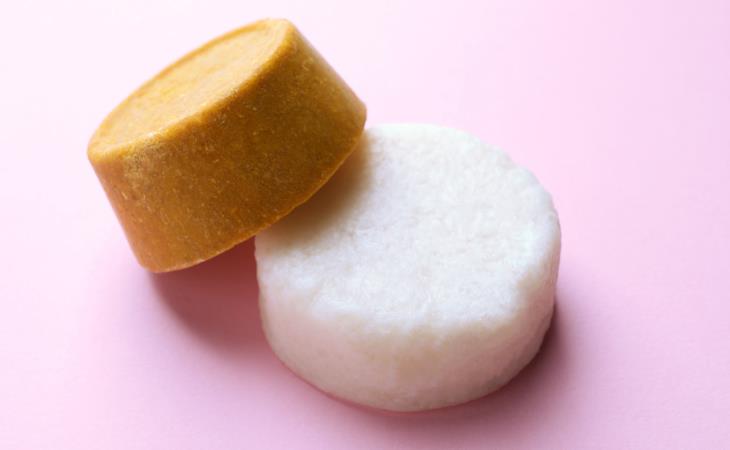Shampoo bars are usually made through a complex process called saponification. This is the chemical reaction that occurs when oils from plants or lard from animals are mixed with sodium hydroxide, more commonly known as lye. Although lye is corrosive, it is used up in the saponification process to turn oil into soap. No lye will remain in the finished soap. The same process is used to make soap. A fragrance is then added to the concoction, and the mixture is left for a month.
While making a shampoo bar at home, you can add a variety of natural oils to it. This includes olive oil, coconut oil, sweet almond oil, castor oil, essential oils, and shea butter.
Important tips to keep in mind while making a shampoo bar
* Be sure to measure your ingredients ahead of time and have them ready. This is because some steps in making the shampoo bars would need to be followed quickly.
* Saponification causes intense fumes and can burn the skin. Use gloves, eye protection, and a mask before starting a recipe. Cover surfaces with newspaper, and make sure your space is well-ventilated to avoid breathing in lye fumes.
* While mixing water and lye, remember to measure out the correct amounts into separate containers. When you have the exact amount you need for your recipe, add the lye slowly to the water. NEVER pour water into the lye. Doing so can cause the lye to expand or erupt out of the container. Keep some white vinegar handy in case of spills.
* As you allow the lye solution to cool to appropriate soaping temperatures, make sure you label it. Then, move it to a place where kids or pets will not touch it.
How to make a DIY Shampoo bar at home
Here is a simple recipe for an all-purpose shampoo bar that works for most hair types. It's made using lye, shea butter, and some beauty oils. Shea butter is very moisturizing for the hair and scalp. It's ideal for those with curly and coarse hair textures, as well as a flaky and irritated scalp.
This soap is simple to make and healthy for your skin and hair.
Ingredients
- 2/3 cup olive oil
- 2/3 cup coconut oil in liquid form
- 2/3 cup sweet almond oil
- 1/4 cup lye
- 3 tablespoons shea butter
- 3/4 cup cool water
- 2 teaspoons of essential oil of your choice
Instructions
* Mix the oils and shea butter in a stainless steel bowl.
* Slowly pour the lye into the water in a different heat-proof container.
* Let the lye and water mixture cool to about 125 °F (51.6 °C). Now, slowly pour it into the oil. Keep stirring.
* Use a hand blender to mix the concoction. Mix until you get a pudding-like consistency.
* For extra moisture, add another tablespoon of oil and stir. Mix in two tablespoons of your favorite essential oil as well.
* Pour the mixture into a soap mold. Cover it and allow it to set in a soap mold for at least 24 hours.
* Remove the soap from the mold and keep it in a dry place for at least four weeks. This is needed for its curing - the process of allowing saponification to complete, and for water to evaporate.
* Cut your shampoo into your desired size bar and use it.
Frequently Asked Questions
Are homemade shampoo bars good for hair?
Yes. Homemade shampoo bars contain essential oils, natural oils, and butters that nourish your hair from root to tip and make it feel super soft. Since you are making the bar at home, you can ensure no toxic chemicals are added to it that don't work for your hair.
How often should you wash your hair with a shampoo bar?
Wash your hair 2-3 times a week with your homemade shampoo bar for the best results.
Share this post with friends and family...



